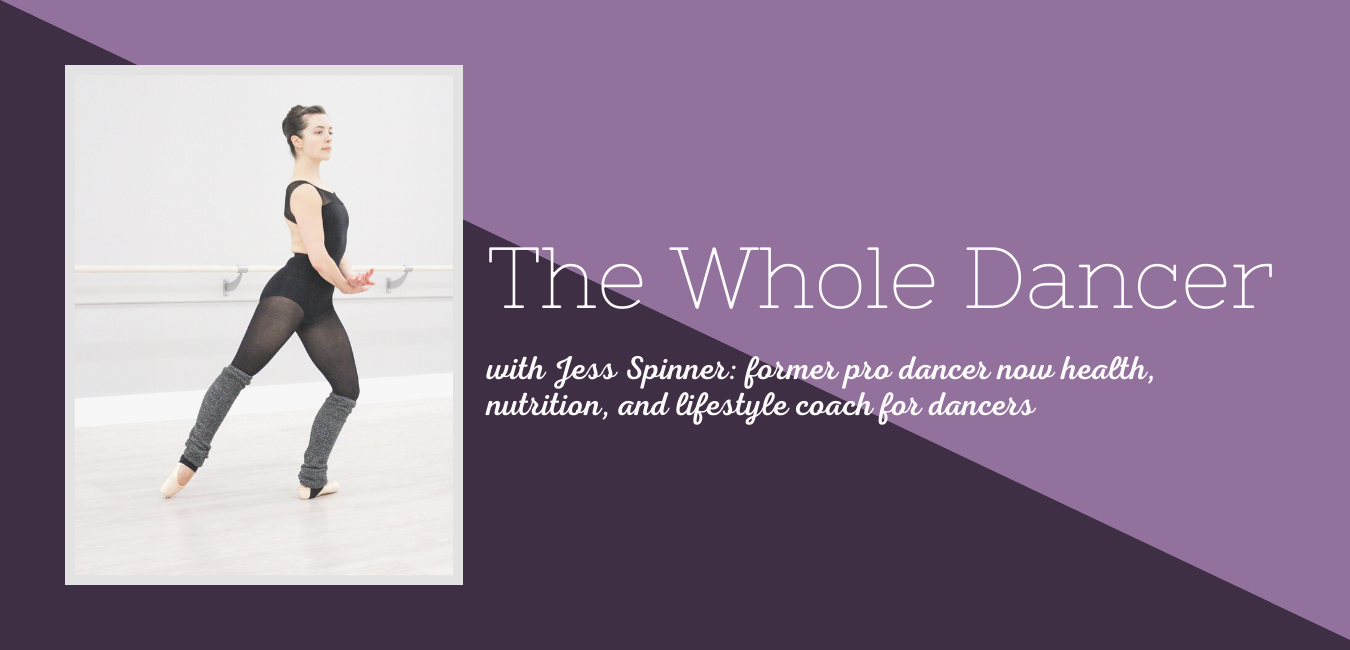What exactly is a food relationship and why does it matter?
Simply put: the way you’re relating to food is your “food relationship.” It may seem like something weird to think about or talk about, but revising food relationships is a primary focus of the work I do with dancers. You’ll often hear me say that you can’t make adjustments to your food choices or start to consider aesthetic body goals until you’re first and foremost in a healthy, balanced relationship with food.
Consider what has impacted your food relationship.
For dancers, there are often too many influences impacting your experience with food. Your personal perceptions of the dance world, comments from teachers, peers, parents, or mentors can all shift the way you feel about food in both positive and negative ways.
Unfortunately, most of the messages around food in ballet are negative. It’s not celebrated for the fact that it’s what allows you to dance injury-free, with ample energy, and supports your body in recovering from the strenuous work you put it through.
Instead, food is viewed as the enemy by many dancers. Something to fear. It’s considered something to avoid or restrict. You might have convinced yourself that only if you eat little will you achieve the dance body “ideal” that still exists in today’s troubled dance world.
Be honest with yourself about where you’re starting.
If you’re in a place of denial about how you truly feel about food or what has brought you to that place, you’ll struggle to make positive changes. You also won’t be able to make supportive food adjustments that would allow you to perform and feel even better in your body.
Do some writing around what your food relationship is and how it got there. Then, envision a beautiful, balanced, flexible food relationship. Consider how it would feel to make food choices easily and without stress.
Your food experience is multifaceted.
It seems like common sense, but there was a time that I would have benefitted from the reminder: Food is necessary. It’s necessary to sustain your life, and without it you can’t live. If you get into restrictive or disordered eating behaviors, it can be life threatening. In fact anorexia and eating disorders are the deadliest of all mental illnesses.
Even if you’re not in eating-disorder territory, it’s possible you’re underfueling. When you’re not consuming enough food, you’re likely to develop nutritional deficiencies. It’s estimated that somewhere near 90% of female athletes don’t consume adequate calcium.
You may have legitimate fear around certain foods. Usually the concern is that a specific food or food group is the thing that will make you fat. I’ve had so many dancers say to me, “When I eat X, I always gain weight,” or “Eating Y will make me fat.” Here’s the good news: When your relationship to all foods is balanced, they can all fit into your eating plan. Even a sports-performance-focused, athletic eating plan.
Your food relationship needs to be intentional and flexible.
Sometimes fueling challenges exist simply because a dancer’s schedule is packed and there aren’t times for meal or snack breaks. It’s a practice to eat when you have the opportunity. That also might mean eating when you have time even if you’re not quite hungry yet.
You will benefit from doing some planning around when and what you might eat. Also consider what you would like your food experiences to feel like. Many of the dancers I work with aim for easy, care-free, no-stress, happy, confident, joyful, and supportive food relationships. However, before you can get there, you have to consider what has gotten you to perhaps an unhelpful place with food.
It’s possible you were surrounded by a subtle food message. For example, I grew up during a time when low-fat dieting was popular. My mom was all about diets, and so all the food in my house was low fat. This led me to experience dietary fat as bad.

You may have gotten more direct food advice that clouded your thinking and experience. Many dancers are told to avoid too much sugar or to make sure you’re eating enough protein. It’s easy to translate that into no sugar or to maximize protein.
Uncovering and rewriting your food experience and relationship is going to serve you to achieve balance, health, and your best dancing. Like a lot of the work I do at The Whole Dancer, it’s a process, but the outcome can have a massive positive impact on the trajectory of your dance journey and career.
Need support to get clear on what you’d like to feel like around food and how to achieve that? Book a call here to get started.

Pingback:Dancers and Protein: Can you eat too much? - The Whole Dancer
Pingback:Auditions and Your Body - The Whole Dancer
Pingback:Can Dancers Safely Set Weight Loss Goals? - The Whole Dancer
Pingback:Dancers: Be Intentional about Food Choices without Obsessing - The Whole Dancer